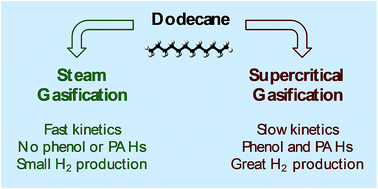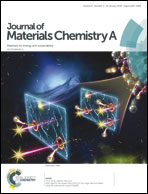Effect of pressure on the gasification of dodecane with steam and supercritical water and consequences for H2 production†
Abstract
Supercritical water (SCW) is widely known to be a powerful gasifying agent, but the supercritical gasification of linear paraffins is a method whose ability to produce H2 has not been studied significantly. Herein, an analysis of the gasification of dodecane, a representative diesel compound, with steam and SCW and the ability of the method to produce H2 under different pressures is reported. In this study, the broadest pressure (1–500 bar) and temperature (550–800 °C) ranges ever studied in this field are covered. We found that a fraction of the short-chain hydrocarbons generated in the thermal cracking of dodecane are turned into polycyclic aromatic compounds and phenol, compounds that hinder gasification. These reactions become more significant as steam at atmospheric pressure is progressively compressed up to SCW at 500 bar; consequently, steam gasification is faster than supercritical gasification. A gasification mechanism that gathers all of the possible pathways is proposed. Despite the slow gasification kinetics in SCW, a pressure slightly above the critical point (250 bar) is the most efficient to produce H2. At this pressure, the long reaction times related to the high SCW density allow a significant amount of CH4 and CO to be reformed into H2; however, further compression is not recommended because gasification is significantly slowed down and H2 production decreases.



 Please wait while we load your content...
Please wait while we load your content...